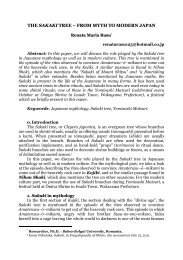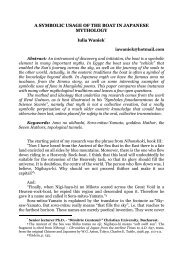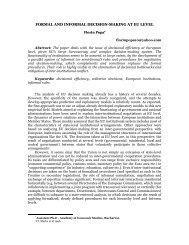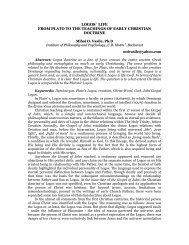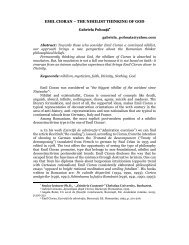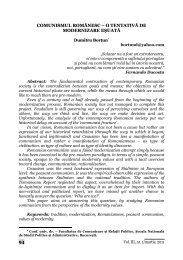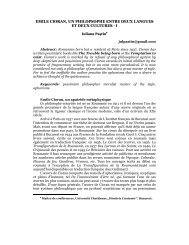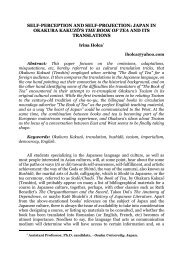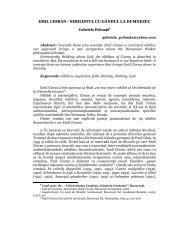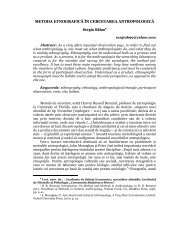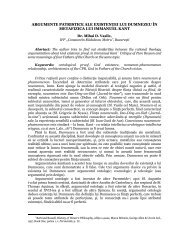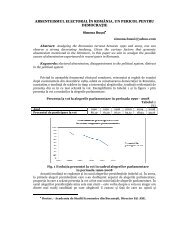JAPANESE TRADITIONAL RAIMENT IN THE CONTEXT OF ... - cogito
JAPANESE TRADITIONAL RAIMENT IN THE CONTEXT OF ... - cogito
JAPANESE TRADITIONAL RAIMENT IN THE CONTEXT OF ... - cogito
You also want an ePaper? Increase the reach of your titles
YUMPU automatically turns print PDFs into web optimized ePapers that Google loves.
easons 1 6 . As was noted, the Edo period (1603—1868) witnessed a tattoo boom<br />
with people from lower walks of life. Those included craftsmen, as well as firefighters<br />
and city guards, who, on the one hand, were not allowed to wear a costly<br />
array and, on the other hand, were often left with no choice other than perform<br />
their duties in their ‘birthday suit’, so to say. For its heyday the practice of<br />
tattooing, however, owed much to the publication of the Japanese translation of<br />
the Chinese novel Simpen Suykogaden (“The River Sloughs”) illustrated by<br />
Katsushika Hokusai (1760 – 1849) and Utagawa Kuniyoshi (1797 – 1862),<br />
featuring the characters as wearing most exquisite tattoos 1 7 . By their artistic<br />
merits, the body paintings could compete with the best textile patterns, at the<br />
same time giving the naked body a ‘clad’ look.<br />
The build-up of the national culture brought forth new behavioral<br />
stereotypes, which, in turn, dictated new approaches to the costume’s volume and<br />
silhouette. The sprawl of Zen practices, as well as Bushido samurai ethic norms,<br />
with its cult of a highly disciplined, loyal and courteous man of a special mould,<br />
necessitated a new dress-code, whereby the multi-layer, loosely-descending<br />
drapes yielded to a strict silhouette, the effect achieved through enveloping a<br />
kimono around the torso. The hectic pace of living in the Meiji (1867-1912) and<br />
Taisho (1912-1926) periods completed the development of a new dress-code,<br />
whose final touch seemed to be the costume’s ‘closed ness’ which answered the<br />
‘bow low’ etiquette completely.<br />
The transition from the free silhouette costume to the tightly fitting<br />
envelopment did not transfigure it into the ‘another perfect body’, as was the case<br />
in Europe. The Japanese did not deem necessary to emphasize certain parts of<br />
the body or to shape the perfect figure. If in Europe, the cut, folds, darts, carcass,<br />
corsette, and/or decolette and other contrivances served to build up an illusion of<br />
the wearer’s body looking perfect to the then beauty standards, Japan went its<br />
own path. The kimono cut still retained the traditional feature of two pieces of<br />
cloth sewn together at the right angle, which, together with the make-up<br />
‘dampened’ not only the age differences, but individual physique as well, whereby<br />
the role of the body was reduced to that of a moving ‘mannequin’.<br />
Lack of interest in the bodily per se is well documented in Japanese visual<br />
arts, which knew of no nude models; nor did it glorify the beauty of the body to<br />
produce an image like that of Venus in European arts. The Japanese artistic<br />
experience is reflected in the perception of clothing not as a means of ‘shaping’<br />
the body, but of enwrapping it.<br />
To sum up, the costume in Japanese culture was intended to emphasize the<br />
wearer’s social status at the expense of ‘degrading’ the natural body. This was<br />
achieved through the application of the strict dress-code, whose idea was<br />
borrowed from ancient China, which regimented the colour scheme, shades, type<br />
and quality of the fabric – all determined by the wearer’s position and social rank.<br />
16<br />
Kitamura, Takahiro. Tattooing from Japan to the West. PA, 2004; Gulik, W. R. Van.<br />
Irezumi. Leiden, 1982.<br />
17<br />
Успенский М.В. Из истории японского искусства. Спб., Гос.Эрмитаж, 2004.<br />
(Uspensky MV. From the history of Japanese art. St. Petersburg., Gos.Ermitazh, 2004).




